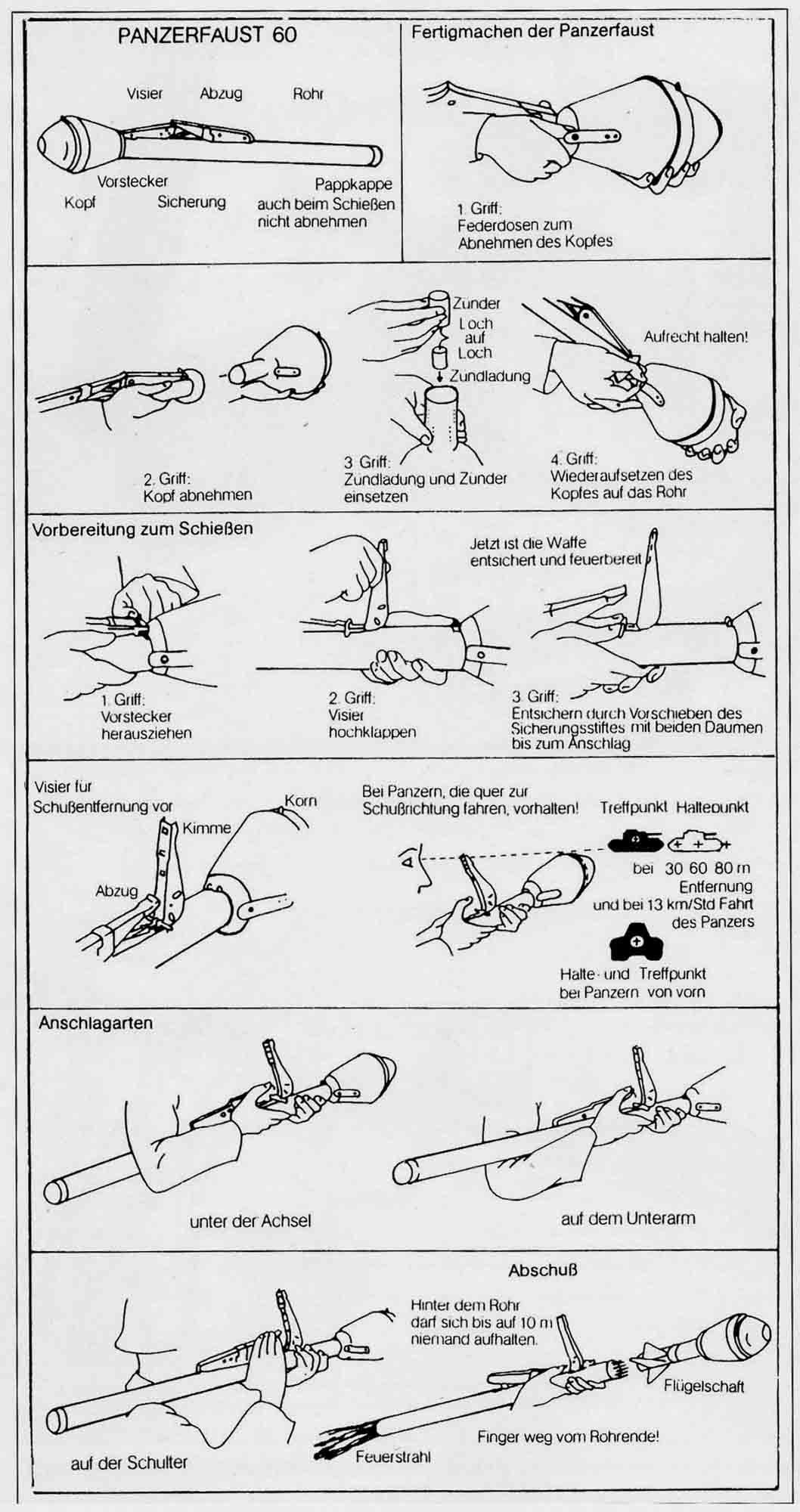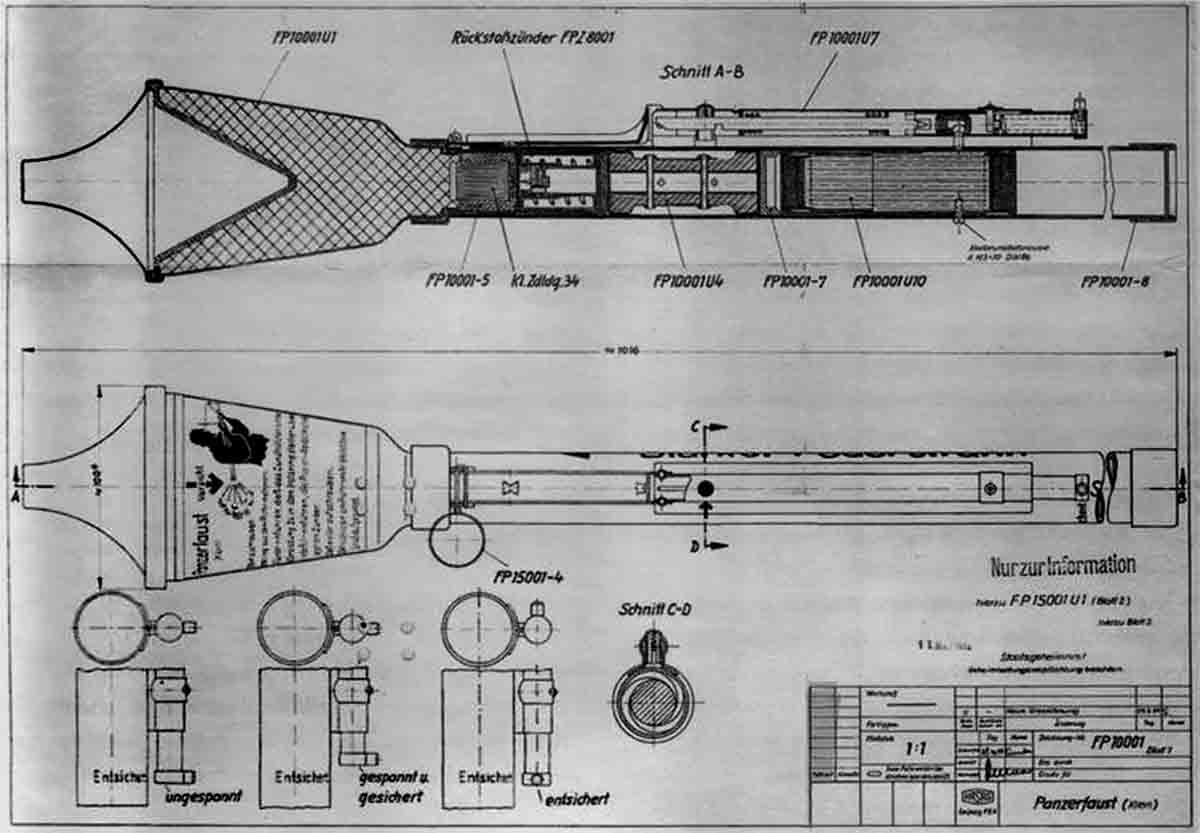Appendix III
Hand-Held Anti-Tank Weapons
Panzerbüchse 39/38 (PzB 38/39)
This weapon was the first hand-held anti-tank weapon in the German arsenal. Their purpose was to provide infantry with a man-portable lightweight anti-tank rifle. It was a manually-loaded single-shot weapon with a recoiling barrel. When fired, the barrel recoiled, which opened the breech and ejected the spent cartridge casing. The breech block was then arrested in the rear position, remaining open for the gunner to manually insert a new cartridge. The gunner then released the cocked breech with a lever at the grip. The breech and barrel would then move forward again and the trigger was cocked in preparation to fire. These rifles were used at company level for anti-tank support with an NCO commanding three teams, each of a gunner and loader serving a single Panzerbüchse 38/39. However, the anti-tank rifle was quite a complicated and antiquated weapon and only effective against the lightest of armoured fighting vehicles.
Panzerschreck – Raketenpanzerbüchse 54 (RPzB 54)
This hand-held 8.8.cm reusable anti-tank rocket launcher was nicknamed by the troops the ‘Ofenrohr’ (stove pipe). The Panzerschreck (tank terror/fear/shock) was designed as a lightweight infantry anti-tank weapon and was an enlarged copy of the American bazooka. It was shoulder-launched and fired a fin-stabilised rocket with a shaped-charge warhead. Although a popular and effective anti-tank weapon, it was produced in smaller numbers than the Panzerfaust.
Panzerfaust
This weapon consisted of a small, disposable preloaded launch tube firing an HE anti-tank warhead, and was operated by a single soldier. The Panzerfaust remained in service in various versions until the end of the war. Written in large red letters on the rear end of the tube was a warning of the back blast. There were six versions: Panzerfaust 30 ‘Kleine’ (small), 30, 60, 100, 150 and 250. The 150 was a major redesign and was deployed in limited numbers near the end of the war. The firing tube was reinforced and reusable for up to ten shots. A new pointed warhead with increased armour penetration and two-stage propellant ignition gave a higher missile velocity. The Panzerfaust 250, the last generation disposable anti-tank weapon, consisted of a reloadable tube and featured a pistol grip. However, none went into production.

This German diagram was distributed to troops who were being trained on how to load, aim and fire the Panzerfaust. The oversize warhead was fitted into the front of the tube by an attached wooden tail stem with metal stabilizing fins. The warhead weighed 2.9kg and contained 800g of a 50:50 mix of TNT and hexogen explosives. It was capable of penetrating armour 200mm thick. There was a crude aimer that flipped up. There were warnings written on it about the back blast. After firing, the tube was discarded, making the Panzerfaust the first disposable anti-tank weapon.

An interesting German blueprint showing the workings and mechanism of the Panzerfaust.

